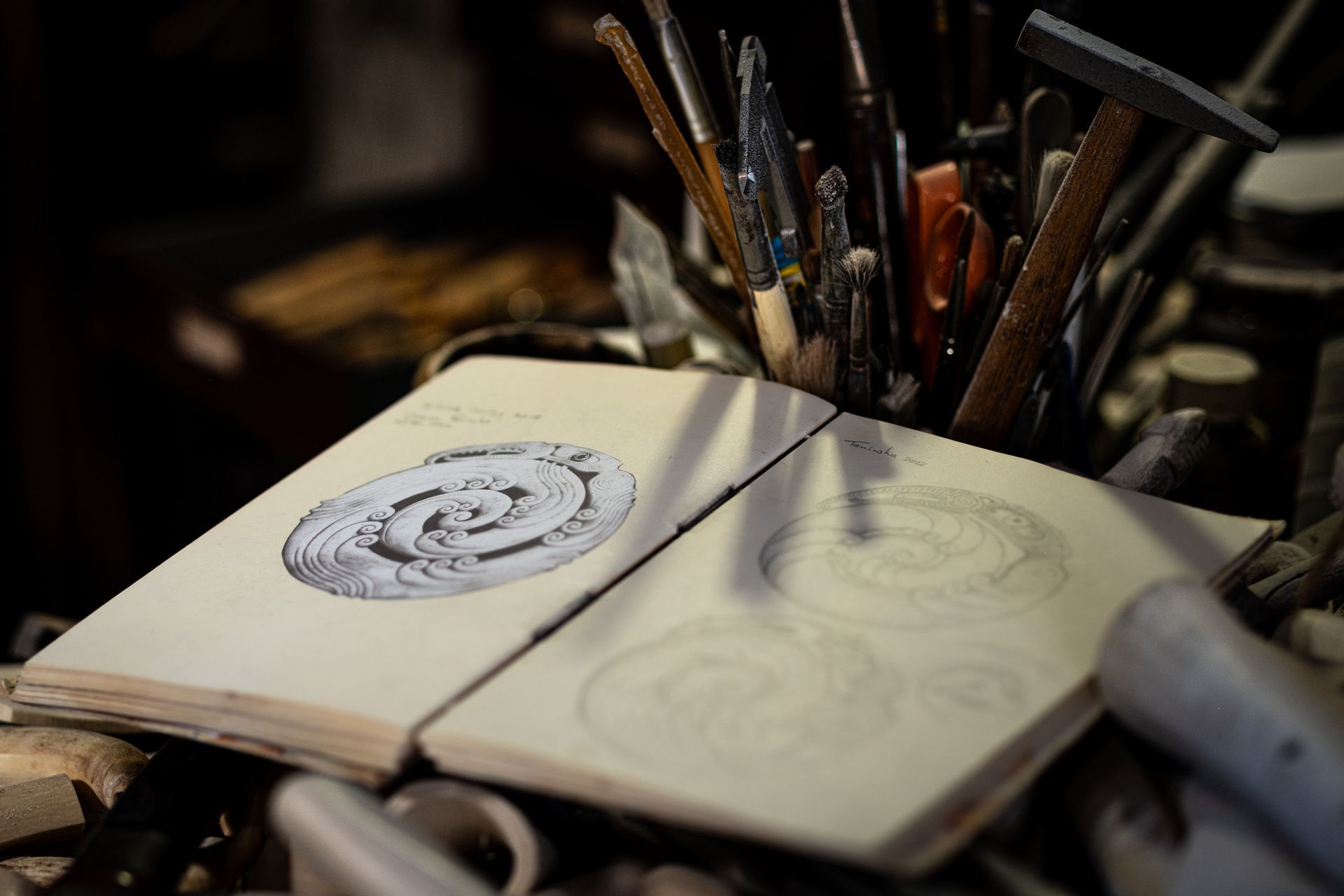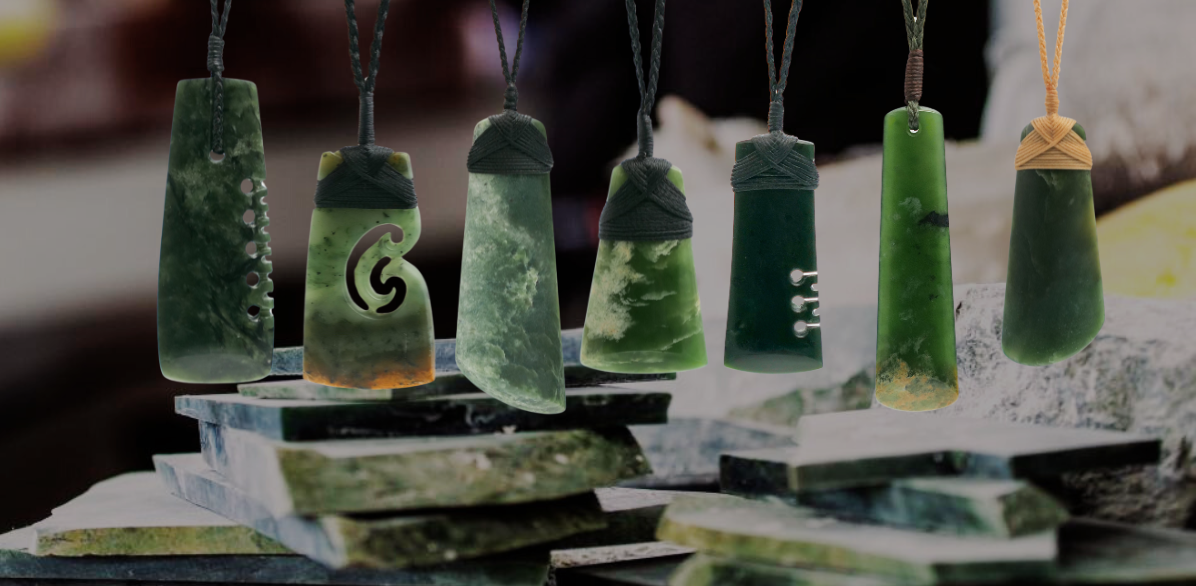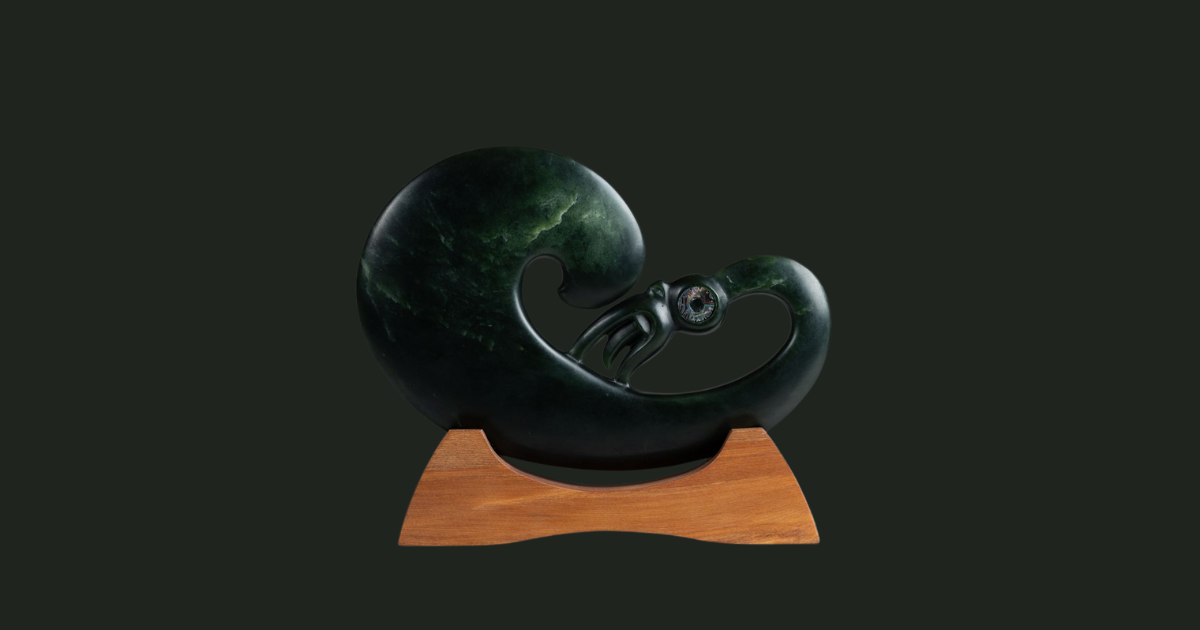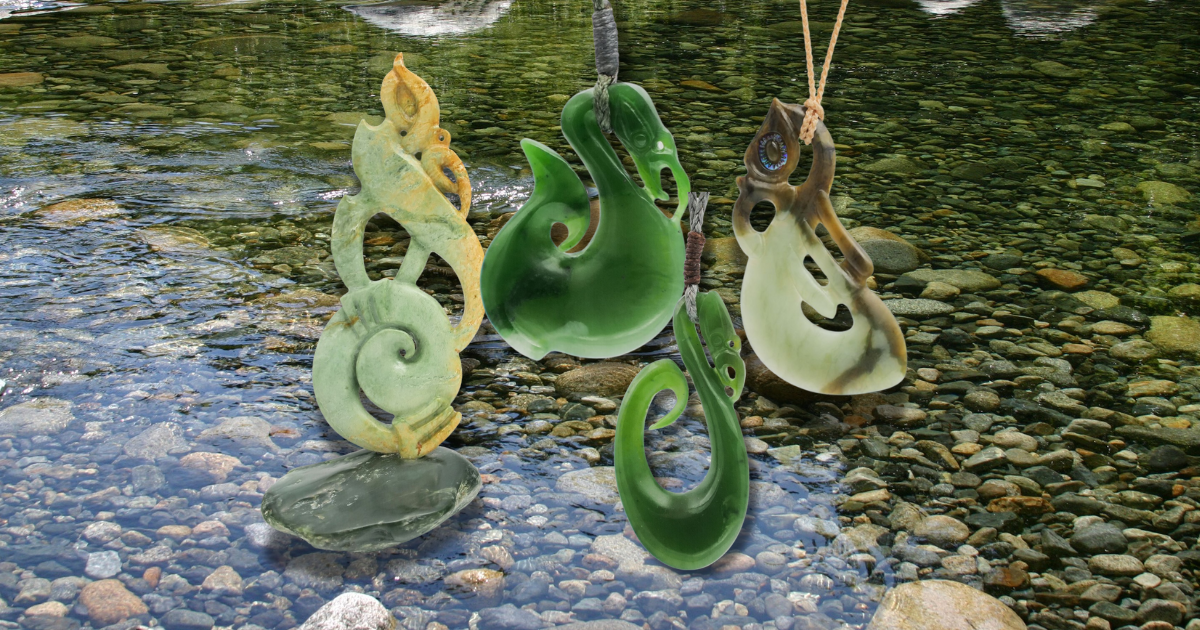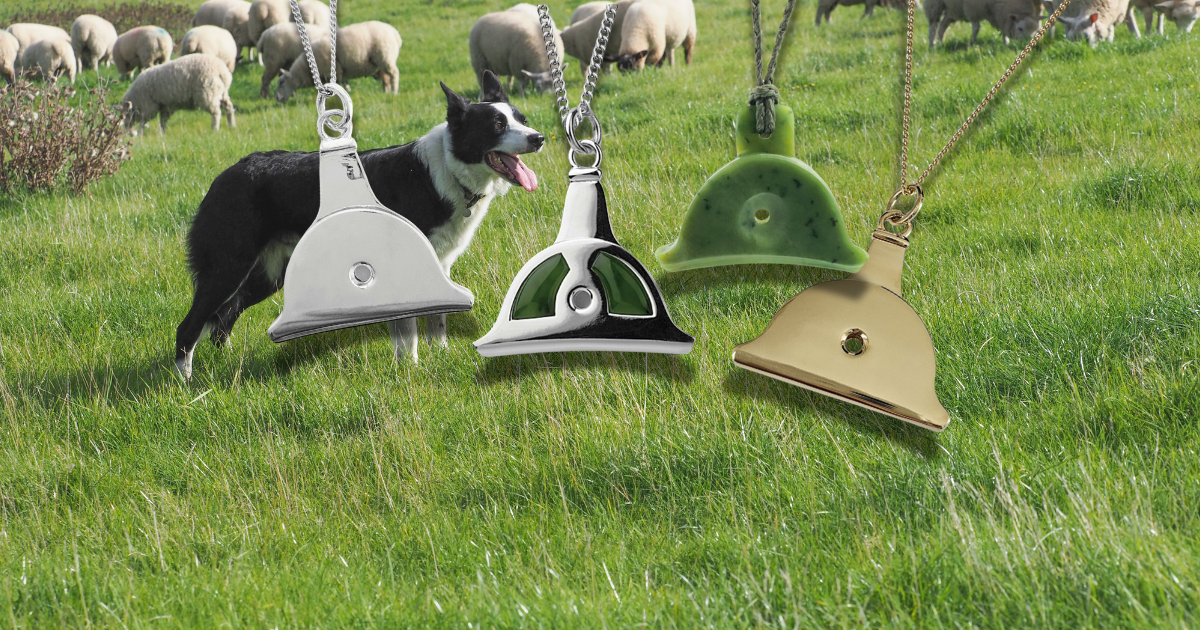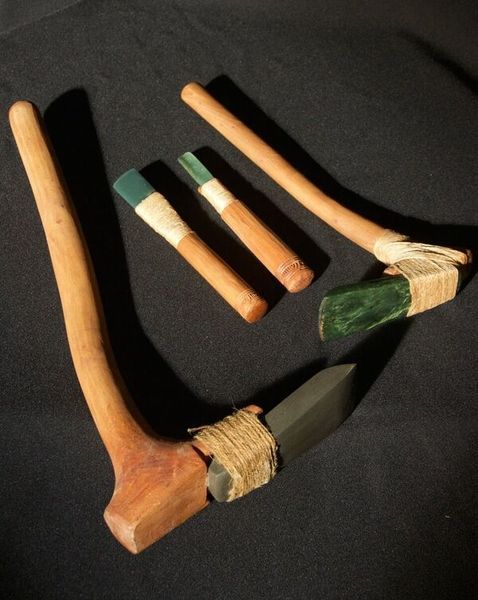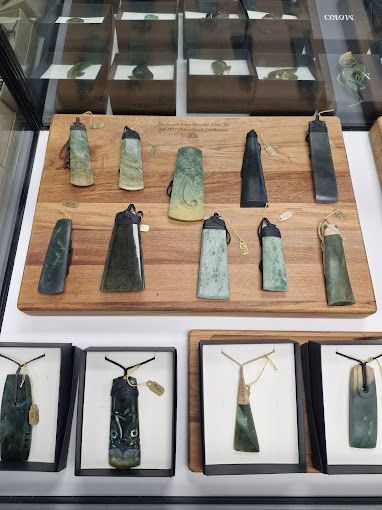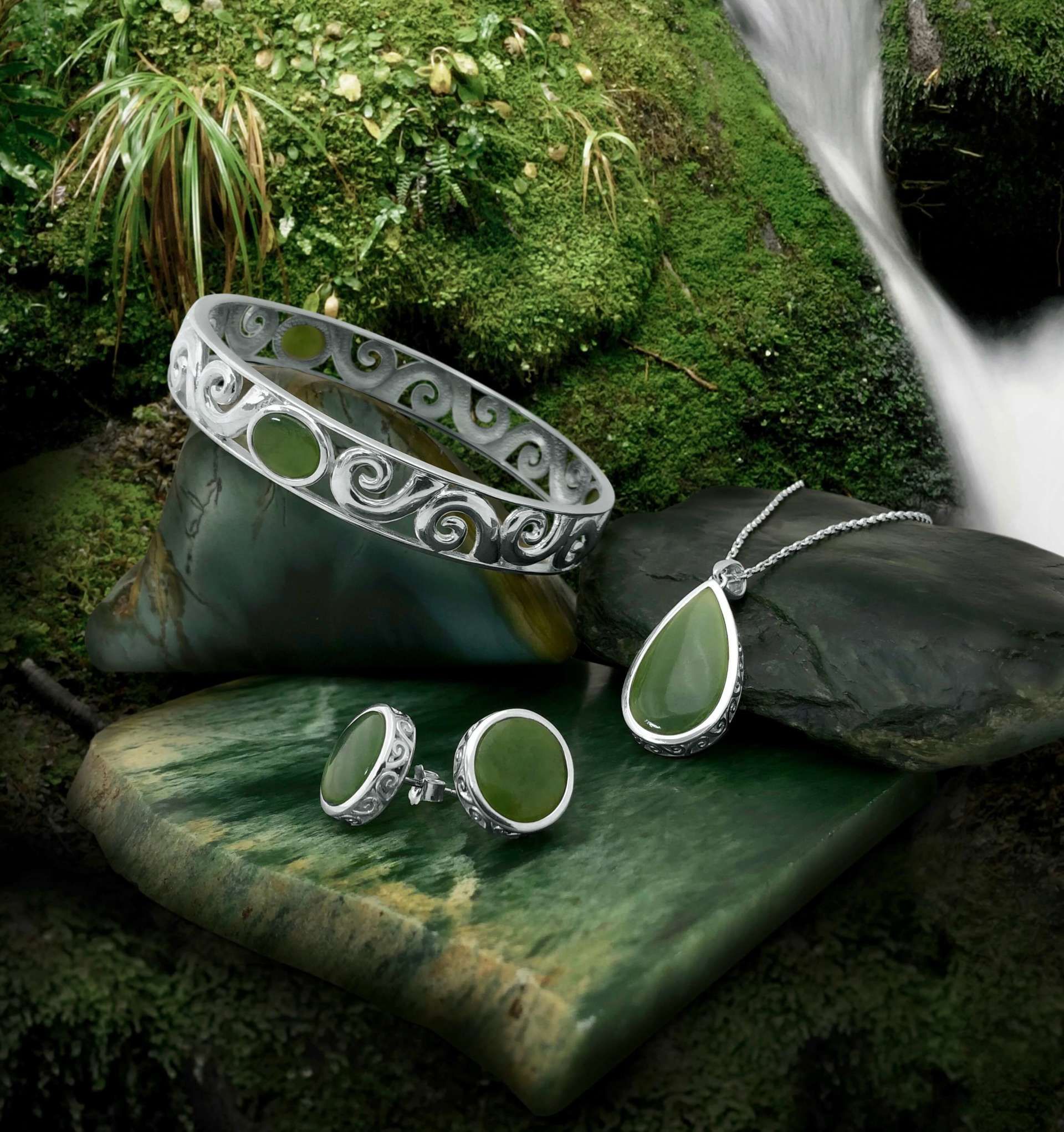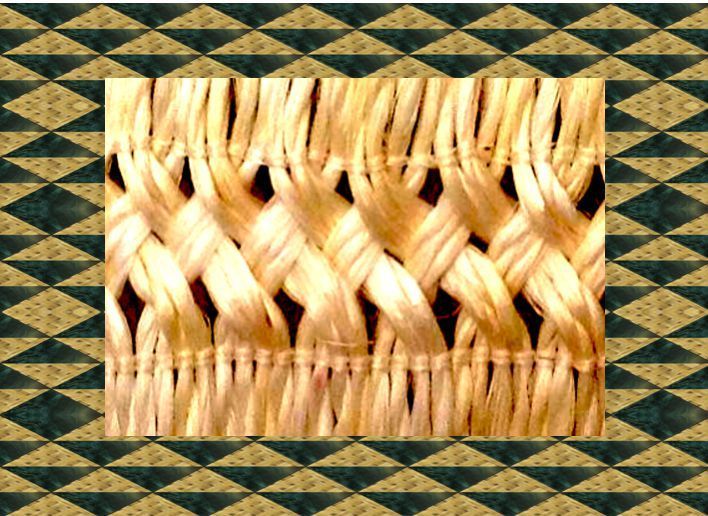Stories & Histories
Immerse yourself in the captivating stories and histories that surround Pounamu, offering a glimpse into its journey through time.
Moko Pounamu Knowledge Library

As the Southern Hemisphere settles into winter and the nights grow longer, many New Zealanders have become familiar with watching for Matariki to signal the beginning of the Māori New Year - and a public holiday to enjoy with our families. But there's another celestial guide that deserves our attention, particularly here in the South Island: Puanga, the brilliant star that serves as an equally significant marker for this sacred time of year.
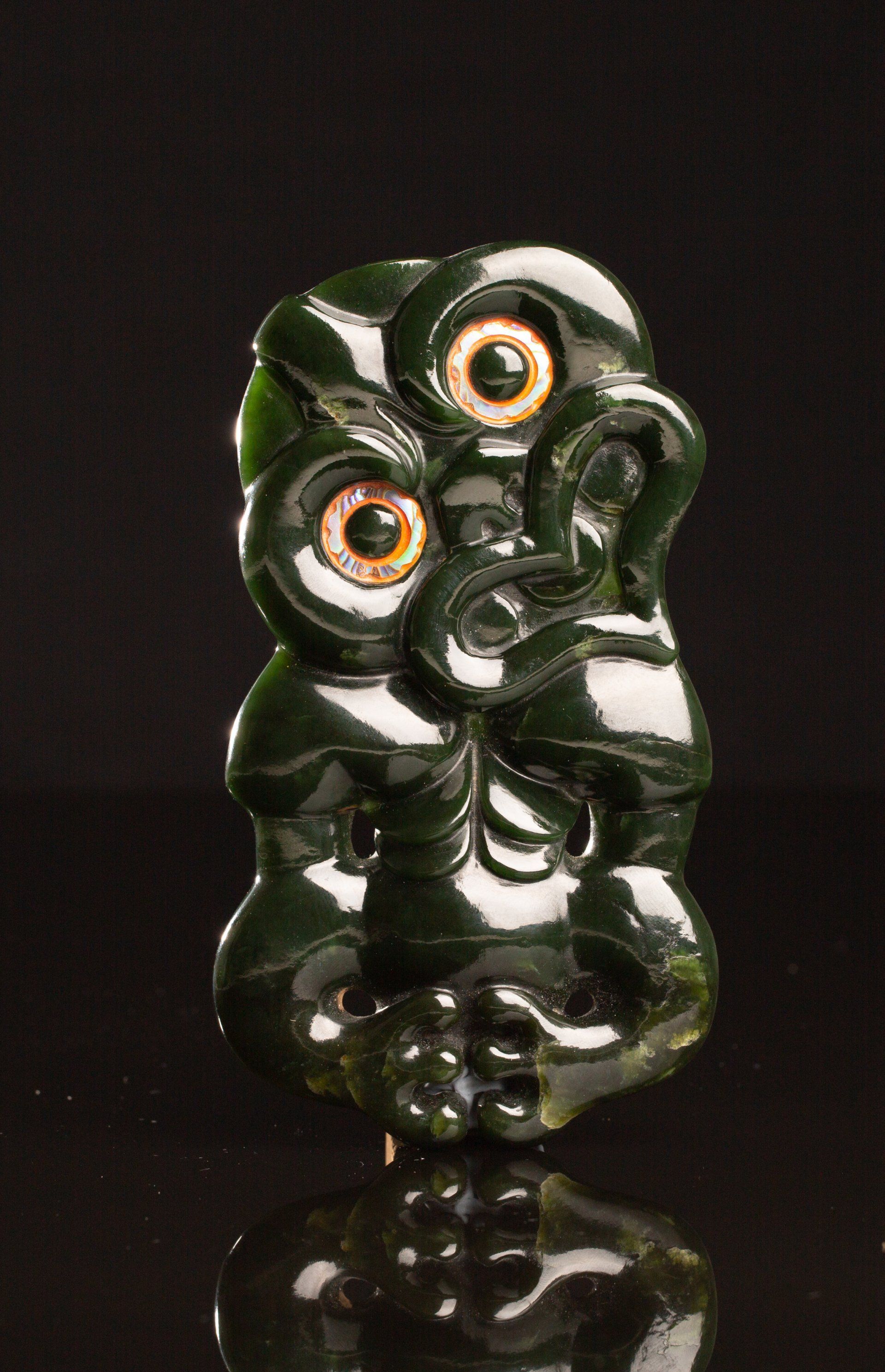
There are many customary uses and meanings attached to hei tiki . One view is that they constitute an ancient form which has been continually reinterpreted, so that many of the current meanings for the form are of comparatively recent origin. An adaptation of this view is favoured here, as it allows for a diverse range of uses and meanings co-existing at any one time, with the likelihood that so-called new uses and meanings are often old uses and meanings which have been brought to the fore again due to changing circumstances. Hei tiki are multifaceted taonga. They embody a range of meanings and purposes on which emphasis can change from day to day, moment to moment, or between different historical time periods and tribal localities, depending on social occasion or circumstance. The meaning of the name 'hei tiki ' can be explained by breaking it down into its separate parts. The word hei denotes something worn around the neck. (Hei and 'hei' are names for the collarbones; the hei delineate that part of the upper body upon which hei tiki and other neck adornments naturally rest. Tiki is a generic word used by Maori and other Polynesian cultures for human images, large or small, whether carved in wood, stone, bone, or some other material. A hei tiki is therefore an image carved in human form that is worn suspended around the neck. At Moko Pounamu, we also have tiki in our collections of sculptures and these are not referred to as hei tiki since they are not pendants. Tiki as the First Man It is sometimes explained that Tiki was the first man created by Tane. According to some traditions, Tiki and Hine ahu-one were the first human pair. Others consider Tiki, or Tiki-ahua, to be an atua himself, and the progenitor of humankind. Man god, or demi-god, there seems to be consensus that humankind descends from Tiki's lineage. Tiki is an early expression for humanity and was used as an accolade to designate persons of high birth. That these pendants take their name from the human form in a general sense, rather than represent Tiki himself, is indicated by the fact that when the sex of early hei tiki is shown they are invariably female. Ngahue and Poutini A pakiwaitara (traditional story) tells of how the ancestor-like god Ngahue fled from tropical Hawaiki, the ancestral homeland, with his coveted pounamu fish Poutini. They were chased away by Hine-tua hoanga and her abrasive cutting stone Whaiapu. After a long journey Ngahue and Poutini made landfall at Tuhua (Mayor Island) in the Bay of Plenty. But they soon sensed the arrival of their foe and continued onwards, arriving at length at the remote Arahura River on the South Island's West Coast. Here Ngahue deposited Poutini, making this an eternal resting place for his precious stone. He then returned to Hawaiki with a portion of pounamu taken from the side of his fish. Back in Hawaiki, Ngahue told the people of the richness of the large land he had discovered. He worked upon the pounamu to fashion the first hei tiki adornments, making also kuru-pounamu (ear pendants) and toki (adzes). The adzes were used to construct ocean-going canoes, and voyages of settlement began, bringing the people and their pounamu treasures to Aotearoa. Hine-te-iwaiwa Another hei tiki creation narrative involves Hine-te-iwaiwa and is set in tropical Polynesia. Hine-te-iwaiwa was a goddess of exceptional beauty, who acquired the first hei tiki as a gift from her father, Tane. Another name by which Hine-te-iwaiwa is known is Hinauri. Hinauri was married to Irawaru; a dispute arose in which Irawaru was transformed into a dog by his brother-in law, Maui. One account says Hinauri threw herself into the sea out of grief for the loss of her husband, and she eventually came ashore at the island home of Tinirau, who was highly regarded as the most handsome man of his time. Other versions say that Hinauri/Hine-te-iwaiwa had heard of Tinirau, and she made her way to his island either by swimming or by sailing upon a shellfish. She and Tinirau then slept together, and this angered Tinirau's other wives, Makai-atua-uriuri and Makai-atua-hachae. A fight took place in which Hine-te-iwaiwa killed these two co-wives. In one account, she killed the women by intoning a powerful karakia (incantation) and by throwing stones at them. As they were hit the women's bodies burst open, letting forth a mass of greenstone, and it was by this means that pounamu had its origins.

n Te Ao Māori - the Māori World - particularly in pre- European times, the health and wellbeing of an individual might be regarded as an indication of the state of that person’s engagement or relationship with their immediate environment or the wider world around them. Illnesses and ailments could be seen as a clear sign of some imbalance between the whole of the individual, that is the emotional/physical/spiritual self and the physical/spiritual realms wherein he or she exists on a day-to-day basis.
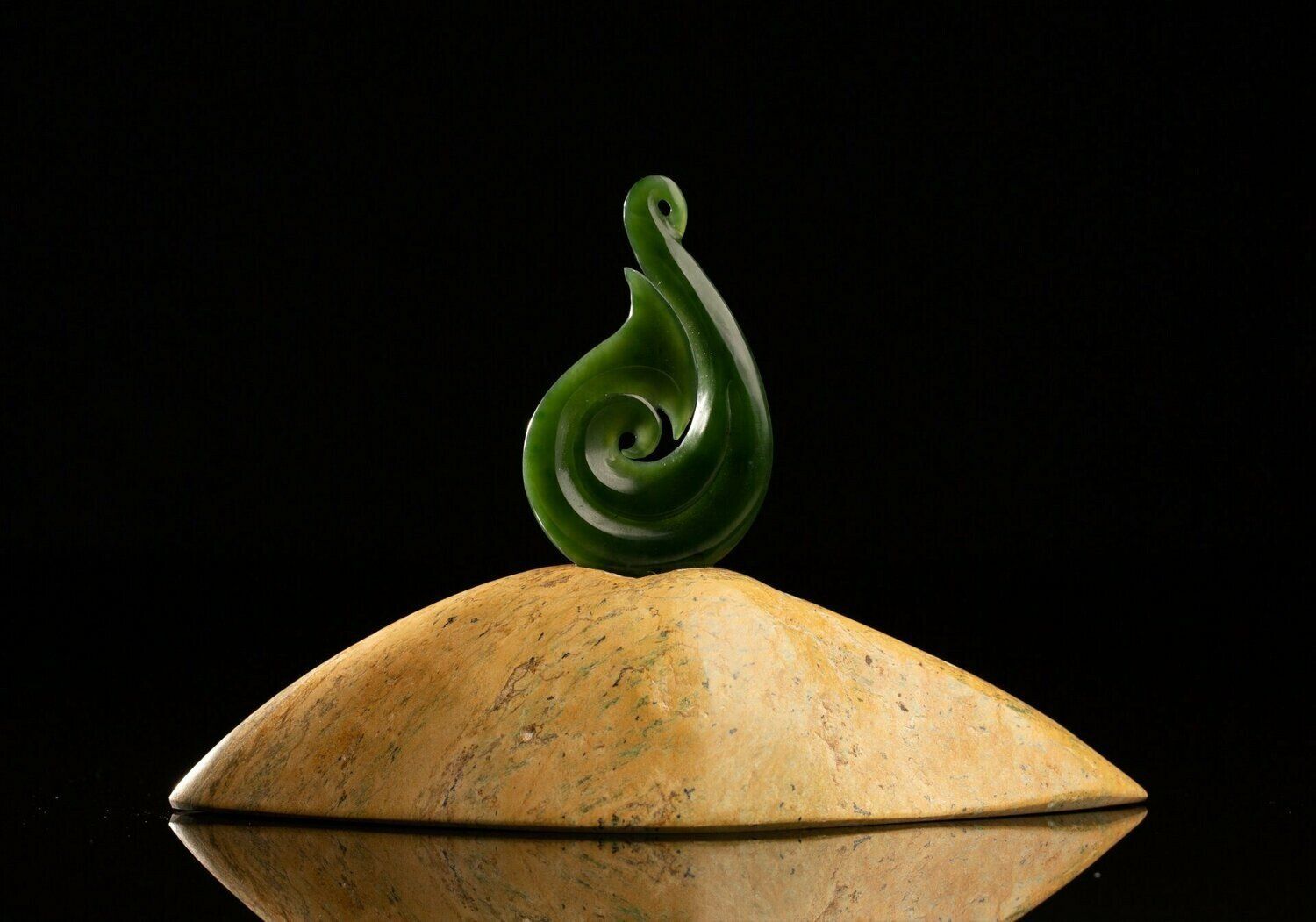
Here in New Zealand greenstone, or Māori greenstone is known most commonly by its Māori name ‘pounamu’, so pounamu shape meanings is a very common topic of conversation with our customers here at Moko Pounamu. A popular shape found in pounamu carvings is hei matau, so today we thought we’d write about the hei matau meaning and why it’s such a popular shape carved out of pounamu. In Māori, the word ‘matau’ means fish hook. ‘Hei’ indicates that the matau hangs around the neck. Traditionally for Māori there is a special connection to the fish hook because according to Māori legend, the North Island of New Zealand was once a fish, and was caught and brought up to the surface by Maui; son of the sky father (Ranginui) and earth mother (Papatūānuku). The connection to the ocean is another special connection, because te moana (the ocean) is regarded as a very spiritual and sacred life source. Fish hooks made from bone and pounamu would be stored around people’s necks for safekeeping in the early days, and slowly they became more ornamental than practical. The associations of hei matau include strength, abundance, connection, affiliation with the ocean, and of course a love of fishing! Hei matau are found in a variety of stylised figures; some incorporating other elements of Māori design, and some more traditional in their shape. Here at Moko Pounamu we have many hei matau individually designed and carved and ready to be viewed and purchased. Take a look at our collection to find a piece that catches your eye, and keep an eye out for our next blog as we go into more detail about the meaning behind another recognisable pounamu carving shape.

Now let’s look at the science. What we know about pounamu/greenstone and its origins from the Mother Earth is that it is a metamorphic rock - that is to say rock which has been formed through tremendous heat and pressure - and evidently came into contact with various minerals which gave it certain properties. Geologists have been able to determine that a series of events which defined certain eras in geological history resulted in rock formations which had been lifted, depressed, mixed with other rocks, enveloped in swamplands, covered in limestone and heated under pressure (not necessarily in that order). Given the unique combination of locations - being South Westland as we know it today - and surrounding materials and minerals, all of this rocky business resulted in Pounamu. Lucky us, we say. Bands of pounamu formations, which tend to run in a north-easterly direction, consist mainly of dunite and similar olivine rock, serpentine, talc formations and actinolite. The addition of other minerals explains why these formations are often referred to as a mineral belt. Pounamu/greenstone is classified as a semi-precious gemstone. This is because it has some of the qualities of precious gemstones, but at the end of the day… it’s still a rock. A beautiful one at that!
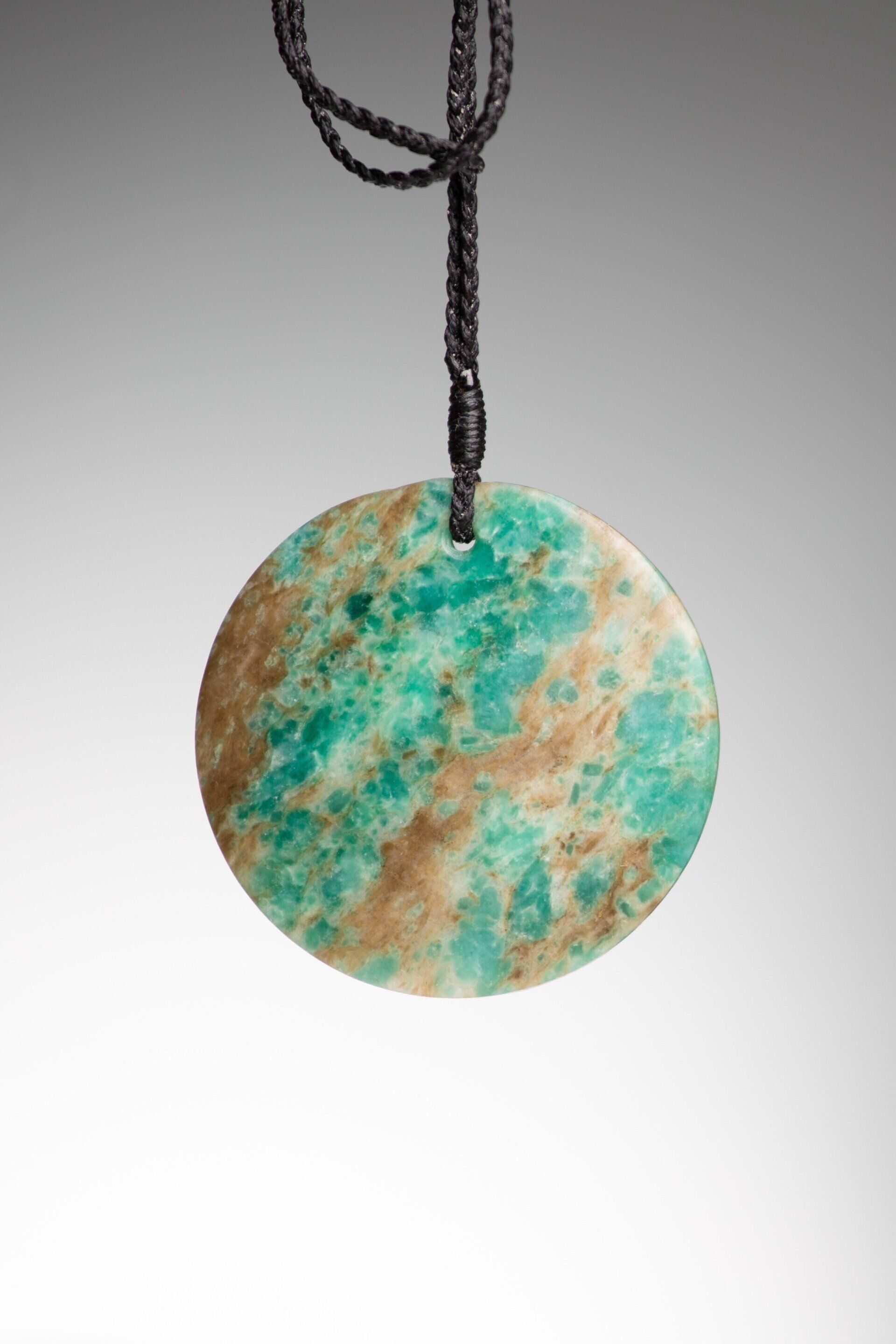
Its origins as a semi-precious stone are similar to pounamu in the way that it was formed - under tremendous pressure and extreme heat many many years ago - but its makeup of different types of stone is what makes it unique. A combination of kyanite (blue), fuchsite (green) and quartz (white) give this stone its turquoise appearance, with bands of iridescence and glitter from the mica in the quartz. These features are near impossible to capture in photographs. Aotea stone is regarded as a stone that carries a feminine energy. This is for a couple of reasons. It’s a softer stone than pounamu and that’s evident when it’s held and felt in one’s fingers. It’s true that the feel of the stone is starkly different to that of pounamu which is harder and intrinsically carries a masculine and powerful energy. The stone’s characteristics speak for this feminine energy too. According to gemologists and those who have an understanding of precious gemstones’ properties, kyanite stimulates intuition and personal truth. Fuchsite is said to support a sense of self-worth. And quartz is said to absorb and regulate energy. For those in tune with stones’ spiritual and healing powers, this is a pretty special one.
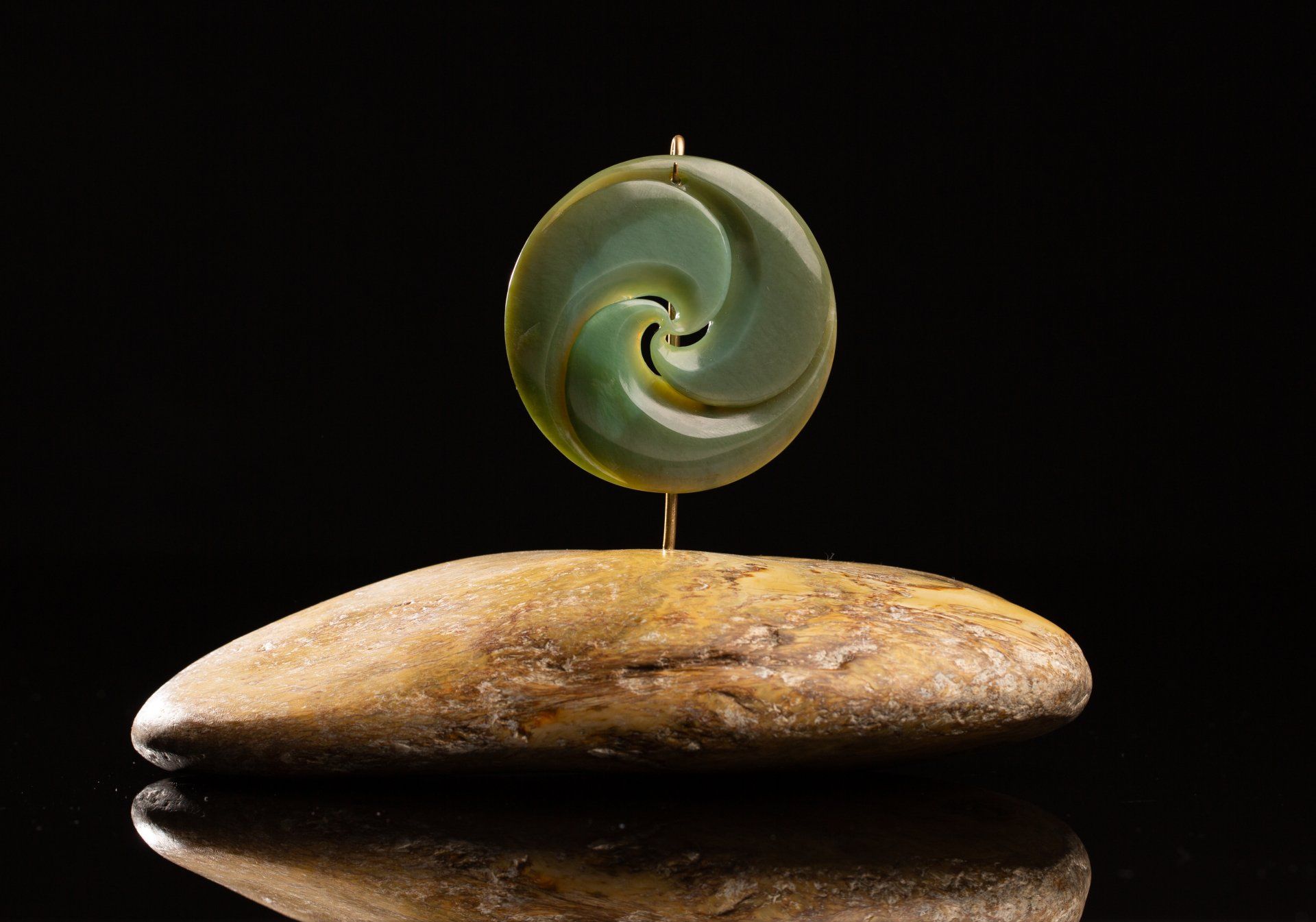
Geologists have been able to determine that a series of events which defined certain eras in geological history resulted in rock formations which had been lifted, depressed, mixed with other rocks, enveloped in swamplands, covered in limestone and heated under pressure (not necessarily in that order). Given the unique combination of locations - being South Westland as we know it today - and surrounding materials and minerals, all of this rocky business resulted in Pounamu. Lucky us, we say. One of the most common misconceptions about pounamu/greenstone is that it’s all green. While imported stone varieties that are commonly known as jade tend to be more green and have less variety in their shades, New Zealand pounamu comes in a range of shades from dark, opaque black to milky, translucent grey and just about everything in between! Bands of Pounamu formations, which tend to run in a north-easterly direction, consist mainly of dunite and similar olivine rock, serpentine, talc formations and actinolite. The addition of other minerals explains why these formations are often referred to as a mineral belt. Although rocks of similar qualities have been found further afield, it is widely accepted that Pounamu is found throughout Westland’s alluvial glacial moraines. Also known as part of the Southern Alps - and following a gigantic fault line which creates the backbone of the South Island. The main historical gathering places are between Greymouth and Hokoitka. Just exactly where certain varieties and types of stone originated from remains a mystery, locked away in a distant past, when all was upthrust and under ice. Specifically speaking, the boundaries of pounamu discoveries are from Taramakau River in the north, the foothills of the Southern Alps in the east, Hokitika River in the south and various coastal locations in the west - owing to rocks being brought down rivers and then deposited on beaches along the West Coast. The most important things to know about the discovery and distribution of pounamu are: Any member of the public is allowed to fossick for pounamu on the beaches of the West Coast of the South Island and they can take what they find as long as they can carry it on their person without assistance If raw pounamu is discovered outside the areas open to public fossicking and/or is larger than what one person can carry, it is the property of Te Runanga o Ngāi Tahu and should be notified to the Pounamu Management Officer immediately At Moko Pounamu we have a longstanding and vested interest in the discovery and sustainability of pounamu, and we thoroughly enjoy inspecting any new pieces of stone that come through our doors. *referenced from the Pounamu Management Plan https://Ngāitahu.iwi.nz/wp-content/uploads/2013/06/Pounamu.pdf
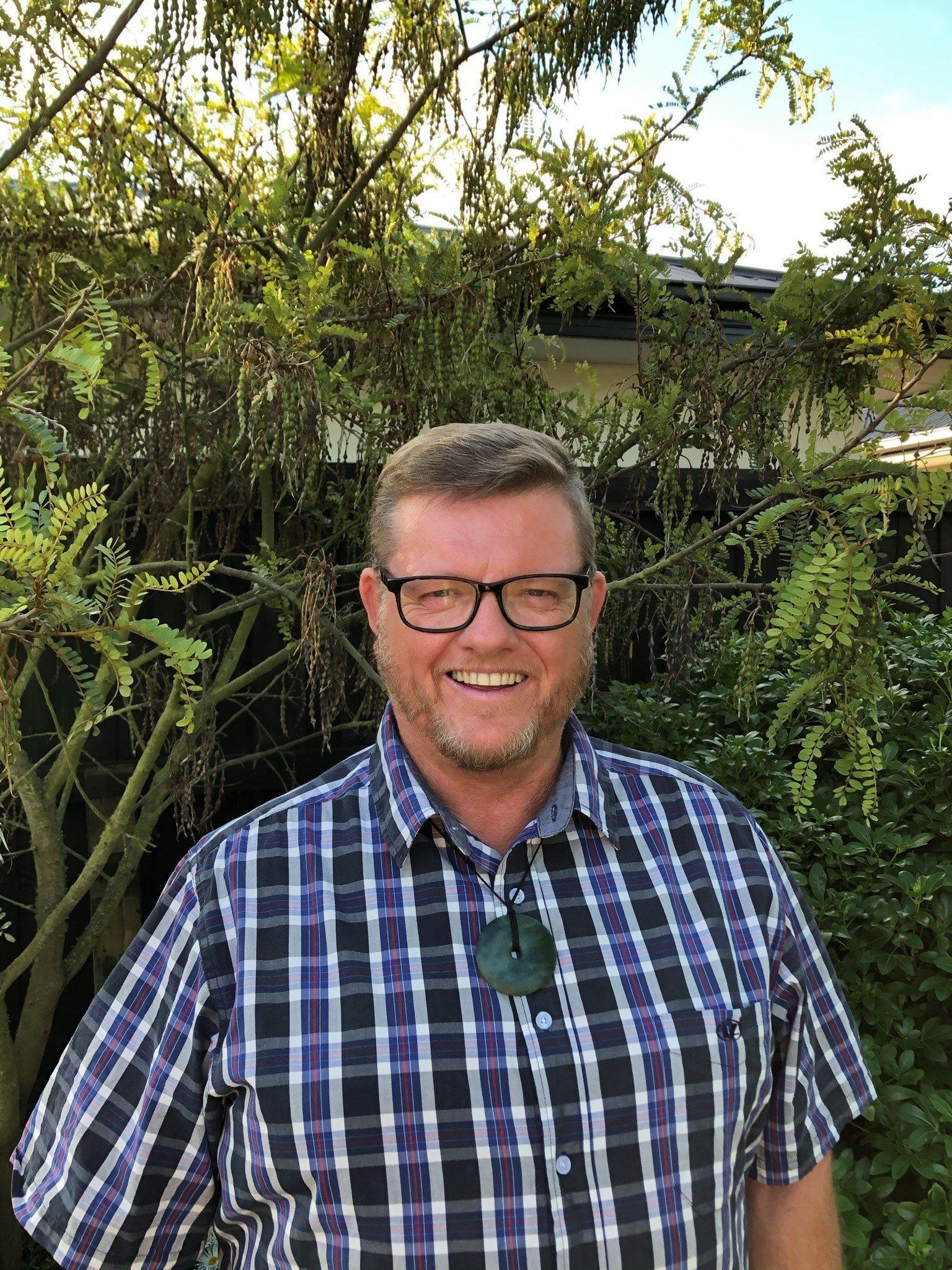
My husband’s most-treasured possession for 23 years was a pounamu taonga - necklace, presented to him when he left a teaching position in Porirua East when we moved back to the South Island after our first son was born. The school community which gave him the pounamu were poor by socioeconomic standards but rich in cultural identity, connection, and sense of family and community – whanāungatanga. That community remains in his heart and in mine – they were very, very special to us, and the pounamu necklace was hugely significant to him and to our whole whānau. Sadly, on a visit to Wellington last year, the taonga was lost. We all grieved for it and lived in hope that the finder would ensure it was returned. Pounamu should be gifted, and so while my husband missed his necklace dearly, he did not want to just go and replace it – it would not be right for him to do this himself. To me though, he seemed so incomplete without it. A great friend of mine, connected with through a shared love of cycling, is the owner of Moko Pounamu, and I told him about our loss. He arranged for one of his great team of carvers to create a new taonga, reminiscent of my husband’s original one, yet unique and perfect in its own right. It is beautiful, carved to perfection in exquisite pounamu. He gifted the new pounamu taonga to my husband, and the look on his face when he received it was one of pure joy. I can’t even describe my gratitude to Deane and his team. I’ve purchased a couple of taonga from Moko Pounamu and they are true treasures, and the perfect gift to people of significance to us. I could not recommend them highly enough.
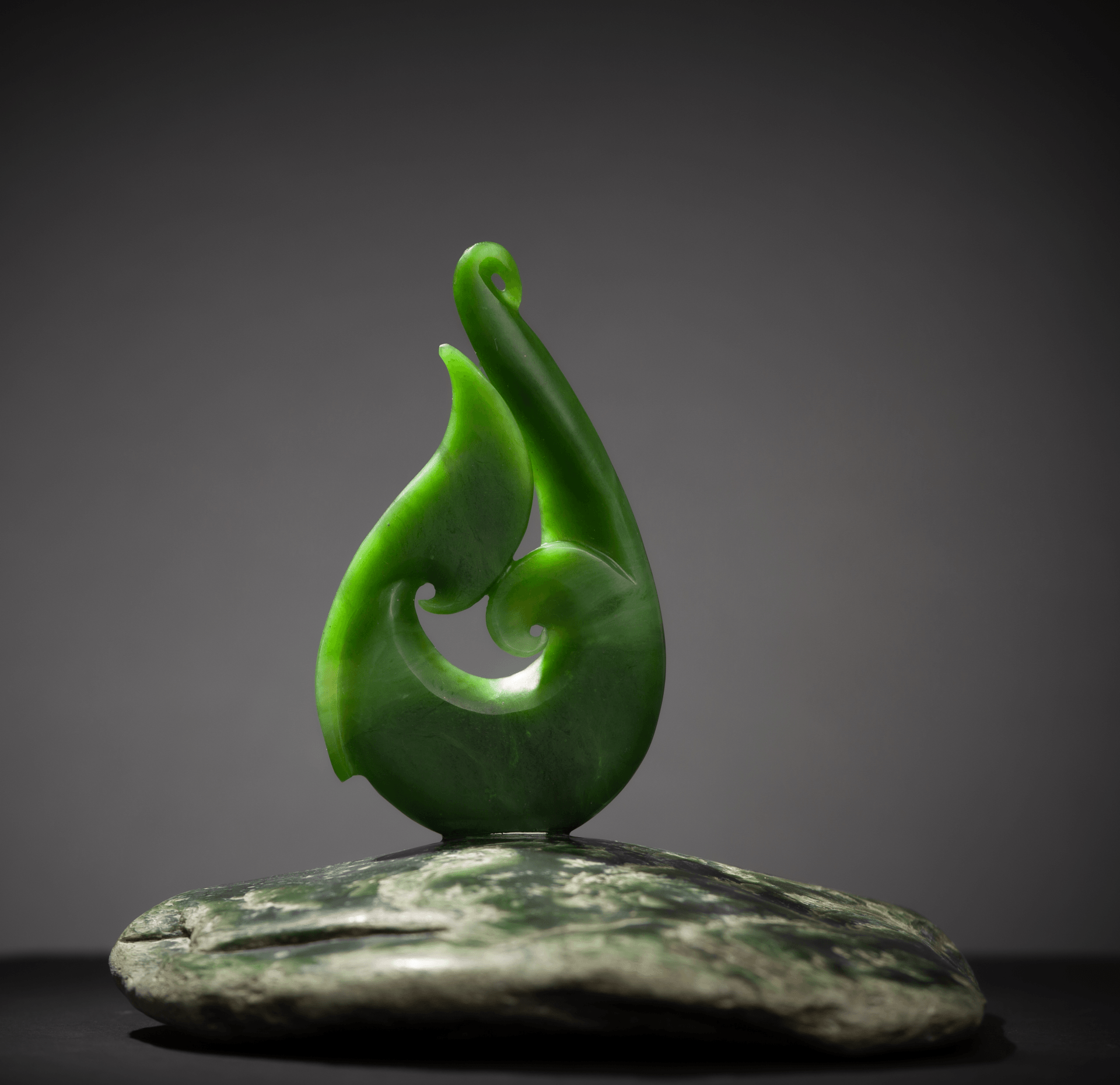
A stone’s size, shape, colour and density is one thing. But its origin, its connection to land or people and its history is another. To the trained pounamu-seeking eye, a piece of greenstone looks interesting even before it’s cut. But there’s really no way of knowing what the inside of a stone is going to look like until it’s sliced with the right tools. There are several stories from our wider family and connections of stone-cutting feats that took several days to complete because of the stones’ sizes. In a practical sense, greenstone is regarded as a difficult stone to effectively polish with its varying degrees of hardness, grain structure and inclusions. Each stone carver (lapidary) develops their own techniques according to the ways in which they carve, and the stones they more frequently work with. Longtime carvers who have paved the way in this industry have developed preferred techniques. For example, particular equipment and the use of water helps to keep the stone cool (and therefore not be blemished by heat marks) and it keeps the dust at bay, which is often a thick rind on the edges of stones. Particularly soft stones, especially those of the Inanga variety, can burn easily from friction caused by fast-spinning sanding wheels. Polish is everything with pounamu. The stone can stand heat but it is how this heat is created to obtain the molecular flow over the surface which results in a flawless polish. In other words, this is a specialised art that only trained experts should attempt because it would be such a shame to see stone wasted when worked by the wrong hands! Beyond practicality there is the question of craftsmanship when it comes to stone carving. There are many examples of excellent carvings in Aotearoa, some of which are time-honoured designs and some of which are more contemporary. Each piece is unique, even if it’s a traditional shape. Read more about pounamu shapes and stone varieties in our other blogs. Some carvers choose stones for their features and allow the stone’s qualities to dictate the shape, orientation and intricacies of the carving. This is just one way of carving stone, and we think it’s a wonderful way to showcase some of the true beauty and rarity we see in stones from different areas. The reverse is also true: carving a specific, traditional shape from a piece of stone will always unearth unique qualities of a stone whichever way the form is orientated and presented. That’s one of the most exciting things about working with pounamu - we never know exactly what colour or character we’re going to end up with in a finished product until it’s done. And even then, in different lights and environments pounamu can present in various ways, being true to the beautiful mineral resource that it is, and its connection to the natural world.
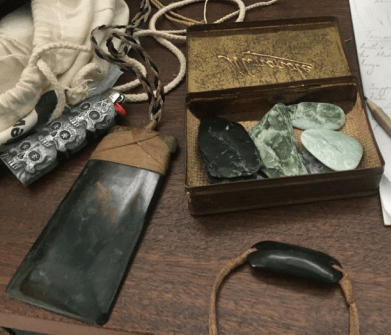
The greenstone door is a tohu; a potent symbol, of peace in the Māori world. It’s an idea, not an artefact. Te Tatau Pounamu is a metaphor that allowed seemingly intransigent antagonists to consider alternatives to war and ongoing conflict. It’s an arrangement in lieu of a battle. Generational enemies could bury the hatchet by walking through the greenstone door. The concept reflects a small part of the overall intrinsic worth of this taonga, this national treasure that is Pounamu, whose value equates with life, yielding alliance and cooperation where bloodshed seemed otherwise inevitable. Te Tatau Pounamu speaks to the inherent mana of the stone, of its authority, of its strength, of a kind of spiritual power that seems to emanate from within it. We can see as well how its physical characteristics; its depth of colour, its density and weight, its hardness and durability, seems to reflect the character of the landscape from which it emerges, at once beautiful and mysterious and enduring. But it’s this aspect of mana above all other qualities, that I think best explains the place of Pounamu within the Māori world view and by extension, the broader story that is New Zealand. Mana begins with whakapapa. It is a....
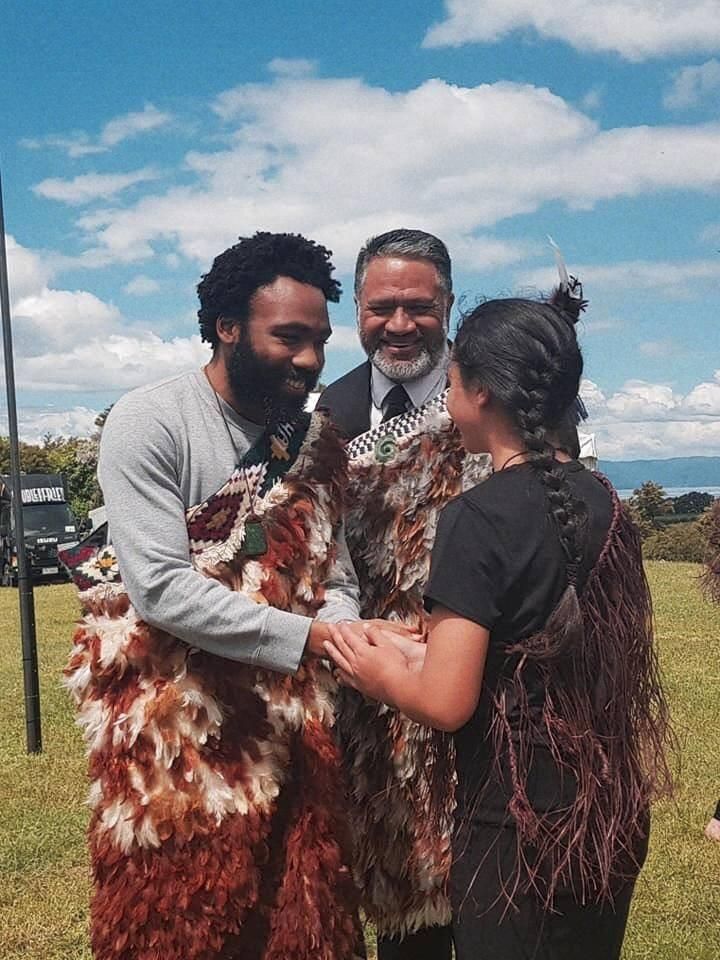
Pounamu/Greenstone holds immense cultural and spiritual significance. The god stone of our Maori people, along with serpentine and other closely related stones of the amphibole group of minerals. Hugely significant for Maori, as it was often used as a seal for transfer of title, the Greenstone 'taonga' or treasure taking the place of a document as proof of sale of land. No wonder Pounamu serves as a very meaningful gift and has been embraced by world famous people like Ed Sheeran, Donald Glover and Jacinda Ardern. Ed Sheeran was gifted Pounamu by a KIWI tattooist and now he wears it all the time to prove his love for Aotearoa . He has expressed his desire to turn Kiwi and make it home !

